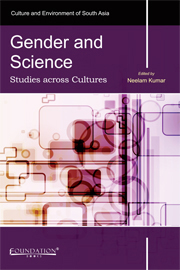Introduction: Reflections and Realities across Cultures
Published online by Cambridge University Press: 05 May 2013
Summary
Whatever we may say, we don't in reality regard women as suitable for science careers
C.P. Snow (1993: 103)Gender inequality and segregation have characterised science for centuries. Gender biases has been shown in science in terms of its nature and style, content and practices. Various ideological constructions of gender through different eras have served as barriers to women's access and progress in the sciences. In the mid-nineteenth century, for example, social Darwinists invoked evolutionary biology to argue that a woman was a man whose evolution – both physical and mental – had been arrested in a primitive stage. Women's intellectual development, it was argued, would proceed only at great cost to reproductive development. There was a prevalent myth, which claimed that, as the brain developed, the ovaries shrivelled (Schiebinger, 1989). Women were thus perceived intrinsically unsuited to natural philosophy and those who did show any aptitude were made the butt of savage satires. This attitude however continued, with few revisions, throughout the history of Western science. In the twentieth century, scientists gave new interpretations to the prejudices on women in science. For decades, whether boys' mathematical skills are superior to girls' has been a controversial topic among social scientists. Scientific and mathematical abilities were thought to be written into our genetics.
- Type
- Chapter
- Information
- Gender and ScienceStudies across Cultures, pp. xv - xxxPublisher: Foundation BooksPrint publication year: 2012
- 1
- Cited by



